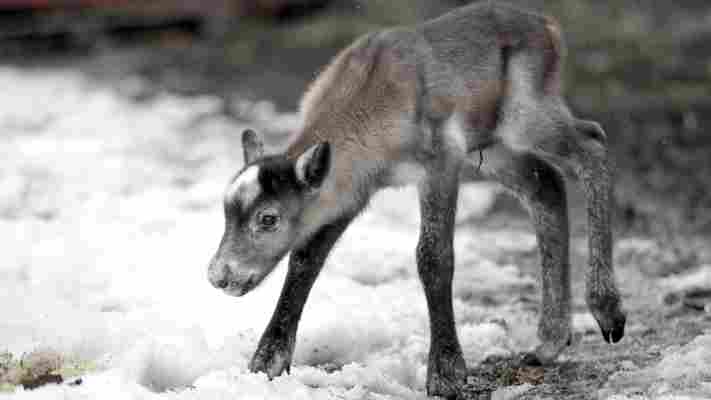Sony plans to release 10 live service PlayStation games by 2026, it's been revealed.
During a recent earnings call (via VGC ), Sony discussed its acquisition of Bungie and revealed that it plans to release 10 live service titles by 2026, harnessing Bungie's expertize in the genre to do so.
"Our studios will learn from Bungie, that is a strong wish we have the Bungie side is willing to work closely with us," Sony's Chief Financial Officer Hiroki Totoki said during the call.
That doesn't necessarily mean Bungie will be working on any of these live service games, but it's likely the "major new IP" that the studio is working on - which has been described as a "multiplayer action game" - will be part of that release schedule.
While Sony hasn't officially confirmed these titles will land on PS5 , it seems like a no-brainer given that it's the company's latest hardware - whether we'll see them land on PS4 (or other platforms) is less certain. However, at the very least, it's likely Bungie's new IP will land on other platforms.
"We want the worlds we are creating to extend to anywhere people play games," Bungie said in its FAQ about the recent Sony acquisition. "We will continue to be self-published, creatively independent, and we will continue to drive one, unified Bungie community."
Analysis: but what are these new live service games?

While these live service games haven't been confirmed, we do know that there are quite a few Sony studios working on multiplayer projects right now that could have live service elements.
For one, as we touched on above, Bungie has been working on a new IP outside of the Destiny universe - the studio's first new IP in almost a decade. This new title will be a "multiplayer action game" (according to a prior job listing) and is rumored to be called 'Matter', following the studio's trademark registration of the name.
As of 2021, the game appeared to be in early development, with job listings describing it as in its "incubation" period. While it's not been confirmed that this game will be live service, with Bungie's experience in the area and Sony's push into the live service space, it seems likely that it will be.
While the new Bungie IP seems the most likely to be a live service game, there are a few multiplayer projects in the works at PlayStation Studios that also seem primed for live service. Marvel's Spider-Man developer Insomniac Games was hiring for a multiplayer project back in 2021, as was Ghost of Tsushima developer Sucker Punch , while Naughty Dog has been working on its "first standalone multiplayer" which is a spin-off of The Last of Us 2 .
We also know that Sony has teamed up with Deviation Games , made up of ex-Treyarch devs, to work on a new IP (which we imagine will be a multiplayer shooter) and PlayStation and Firewalk Studios have a publishing partnership to develop a new multiplayer IP.
If all of these games include live service elements (which isn't certain right now), then that leaves four games unaccounted for. We're hoping that, in the coming months, Sony will share more details on its plans for live service - but it's possible it might not share the full breadth of its vision until its acquisition of Bungie is finalized.
Brown bears in Sweden wake from hibernation and go on reindeer killing spree
It's not a surprise that bears are some of nature's most deadly predators, but researchers in Sweden caught sight of one brown bear that was downright murderous.
Brown bears ( Ursus arctos ) hibernate through the winter months and emerge in the spring with voracious appetites. It was this period of activity that conservation experts at Nottingham Trent University, the University of León, Spain, and others sought to study when they identified the especially deadly female.
Using GPS collars, the researchers tracked 15 bears in Norrbotten, Sweden, for two years. The area is also home to herds of reindeer and moose, and the reindeer calving season begins in the spring, just as brown bears emerge from hibernation.
These young reindeer calves are especially vulnerable to hungry bears, with one female bear killing 38 reindeer calves in just one month. Once the moose calving season began the following month, that same bear went on to kill 18 moose calves. All told, the bear killed a hooved calf at a rate of nearly one a day for two months.
Even more remarkable, the studied bears changed their hunting grounds according to these calving seasons. When reindeer calving began, the bears moved from the wetlands and coniferous forests to the more rugged, higher elevations favored by reindeer rearing their young.

Once moose calving began, the bears then moved down to the deciduous forests and old clear-cuts favored by moose during this period. After the moose calving ended, the bears returned to more remote areas away from human activity and mostly subsisted on berries for the remainder of their active period.
"We found that brown bears switched their habitats across pre-calving, reindeer calving, moose calving and post-calving periods,” Dr. Antonio Uzal Fernandez, a wildlife conservation expert at Nottingham Trent University's School of Animal, Rural and Environmental Sciences, said in a statement .
"It is clear that highly predatory bears were mirroring the land cover types of reindeer and moose and to overlap with seasonally available and vulnerable prey," he said. "Such a process shows an active hunting strategy of brown bears in spring, when their diet is more dependent on animal protein than during the rest of the year."
While the unidentified female bear was a particular standout in terms of her body count, she wasn't alone. Eight of the 15 bears tracked were deemed "highly predatory", and typically killed more than 20 newborn reindeer and five newborn moose. The findings were recently published in the journal Diversity .
Analysis: Nature is a messy business
It isn't surprising that brown bears are deadly predators, but tallying their kills puts things in perspective and can help inform wildlife management practices in the future.
While the moose herds in Sweden are entirely wild, the reindeer are partially domesticated and make up a substantial part of the indigenous Sámi people's economic and cultural life.
Up to 30% of reindeer calves are killed by bears every year, leading to economic losses for herders. These deaths also have a significant demographic impact on the reindeer herds, especially with the loss of female calves, which can threaten a herd's long-term viability.
Brown bears are regularly culled to prevent over-predation of reindeer herds, so knowing that some bears are more aggressive killers than others is an important discovery.
"Differences among individuals are...important from a management perspective," study co-author Andres Ordiz, a conservation biologist at the University of León, said, "for instance, mere predator removal, without targeting specific individuals, may not necessarily reduce conflict.”
These two ancient supermountains may be responsible for evolution of life on Earth
The evolution of life on Earth is one of science's greatest mysteries, but we may have moved another step forward in solving it, and two ancient supermountains might have played a critical role during two of life's most important biological inflection points.
In a new study published this month in the journal Earth and Planetary Science Letters , researchers from the Australian National University (ANU) make the case that the primordial Nuna and Transgondwana supermountains seeded essential mineral and atmospheric resources on the planet's surface that kick-started the development of eukaryotic cells and, later, the Cambrian explosion.
When tectonic plates in the Earth's crust collide, mountains form as the crust crumples up like the hood of a car during a wreck. The process might take tens of millions of years, but the end result is some of the tallest mountains in the world, like those in the Himalayan mountain range.
About 2 billion years ago, the formation of the supercontinent Nuna appears to have produced a massive mountain range called the Nuna supermountain. The same thing also happened during the formation of the supercontinent Gondwana, about 600 million years ago, producing the Transgondwana supermountain.
"There's nothing like these two supermountains today," Ziyi Zhu, a Ph.D. candidate at ANU and the lead author on the study, said in a university statement . "It's not just their height – if you can imagine the 2,400km long Himalayas repeated three or four times you get an idea of the scale."
The mechanics of supermountain formation

These supermountains no longer exist, since even as they form, erosion processes from Earth's water cycle and atmospheric wind were slowly grinding the supermountains down. How, then, do we know that these mountains ever existed?
The researchers used zircon with low lutetium content, a mineral that only forms under immense pressure in the roots of high mountains, as a kind of mountain marker. These markers are identifiable in the geological record and can be dated, allowing geologists to track the growth and evolution of these large mountains over time.
Another important element in this process is the nature of plate tectonics itself.
The circulation of semi-molten rock in the Earth's mantle that drives plate tectonics brings minerals and elements that are found deep inside the Earth close to the surface.
This rock along the boundary with the Earth's crust cools and becomes part of the crust.
When plates collide to form mountains, this rock – normally as many as 30 miles below the surface – can be pushed up above sea level as the inner-most root of the mountain.
As the mountain erodes over time, that interior root eventually becomes exposed and erodes as well, introducing the minerals it contained into the air and oceans on the Earth's surface.
Giving evolution a helping hand

The processes that led to these minerals circulating on the surface might have been critically important for the development of complex life on Earth because the vast majority of the oxygen on Earth isn't in our atmosphere, it's locked away in silicates and oxides in the planet's mantle.
By bringing that oxygen-rich rock to the surface, the two supermountains might have helped seed large amounts of oxygen into the atmosphere and oceans and supercharged major evolutionary events in the process.
"We call the first example the Nuna Supermountain," Zhu said. "It coincides with the likely appearance of eukaryotes, organisms that later gave rise to plants and animals.
"The second, known as the Transgondwanan Supermountain, coincides with the appearance of the first large animals 575 million years ago and the Cambrian explosion 45 million years later, when most animal groups appeared in the fossil record."
The process of oxygenating Earth's atmosphere and oceans wasn't steady, the ANU researchers point out. Instead, it came in bursts and two of the biggest influxes in that process coincide with the creation and erosion of these two supermountains.
"The early Earth's atmosphere contained almost no oxygen," Zhu said. "Atmospheric oxygen levels are thought to have increased in a series of steps, two of which coincide with the supermountains.
"The increase in atmospheric oxygen associated with the erosion of the Transgondwanan Supermountain is the largest in Earth's history and was an essential prerequisite for the appearance of animals."
As important as oxygen is, it isn't the only vital mineral this process might have been introducing to the surface.
Elements like phosphorous and iron are essential to the development of complex life, and these are also brought to the surface by mountain formation. The erosion of these supermountains would have introduced large volumes of these minerals to the surface as well.
"The time interval between 1,800 and 800 million years ago is known as the Boring Billion, because there was little or no advance in evolution," study co-author and ANU professor Ian Campbell said.
"The slowing of evolution is attributed to the absence of supermountains during that period, reducing the supply of nutrients to the oceans."
So not only is supermountain formation strongly correlated with major evolutionary advances, the lack of supermountain formation also overlaps with periods of evolutionary stagnation, providing strong evidence of a link between the two.
"This study gives us markers, so we can better understand the evolution of early, complex life," Campbell said.
Could it just be a coincidence?
It is entirely possible that the presence of a supermountain in the geological record and major evolutionary advances during that same period are unrelated, of course. Correlation does not equal causation.
Still, the evidence is compelling, and when dealing with points in time so far in our planet's past, the fact that we even have evidence at all is a big deal.
It also provides a logical explanation for the biodiversity we see by building on what we already know. We might never know with 100% certainty. But, if this turns out to be the case and supermountains are an important factor in the evolution of life, then it not only helps explain how we got here, it could help us in our search for life elsewhere in the universe.
As we study the features of exoplanets with next-generation instruments that will come online in the next decade, singling out planets with identifiable plate tectonics – those exoplanets with mountains, more or less – can help us narrow down candidate exoplanets for further study with the limited resources at our disposal.
And, if nothing else, learning about and imagining our home as it evolved through time is a great way to stay humble.